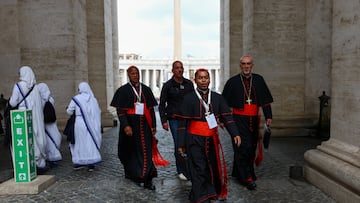When is the conclave to elect a new Pope? Catholic cardinals set date to name Francis’ successor
The conclave could have started earlier, but the cardinals needed more time to hold informal sessions. May 7th will be the starting day of the conclave.


Pope Francis died on Easter Monday, April 21, 2025, at the age of 88 at his residence in the Vatican’s Casa Santa Marta, and the process to organize a new conclave to officially elect the new Bishop of Rome has begun.
Pope Francis’ body was displayed in St. Peter’s Basilica for the faithful to pay their respects. The funeral took place on Saturday, April 26 and a date has been set to begin the conclave to choose a new Pope.
Vatican Protocol for the New Conclave
The elector cardinals will gather in the Sistine Chapel for the conclave after a special mass on May 7. Once inside, the cardinals will vote up to four times a day, requiring a two-thirds majority to choose the new Pope.
After each vote, white or black smoke will billow from the chimney, signaling whether a consensus has been reached on the new Pope. If the smoke is white, the St. Peter’s Basilica balcony will echo with a ‘Habemus Papam’, and the new pontiff will later accept the office and choose his new papal name.
The Vatican's Sistine Chapel has been set up to host 133 Cardinal electors for the upcoming conclave to elect the 267th Pope.
— Vatican News (@VaticanNews) May 3, 2025
On Friday, the Vatican's fire brigade was seen atop the Sistine Chapel's roof installing the chimney that will emit black smoke if at least 89 Cardinals… pic.twitter.com/lHv1uSBY6k
The same method for 800 years
The procedure the Catholic Church follows to elect its new leader has remained virtually unchanged for eight centuries. The papal conclave upholds rules such as only cardinals under the age of 80 being allowed to vote, all voters must be male and Catholic, and the two-thirds majority rule only changes after the 34th ballot, at which point the selection is limited to the two candidates who received the most votes in the previous round.
Another rule is that the names of the cardinals responsible for organizing the voting process are chosen at random. In total, there are nine: three act as scrutineers who oversee the voting, three collect the ballots, and the remaining three review them.

